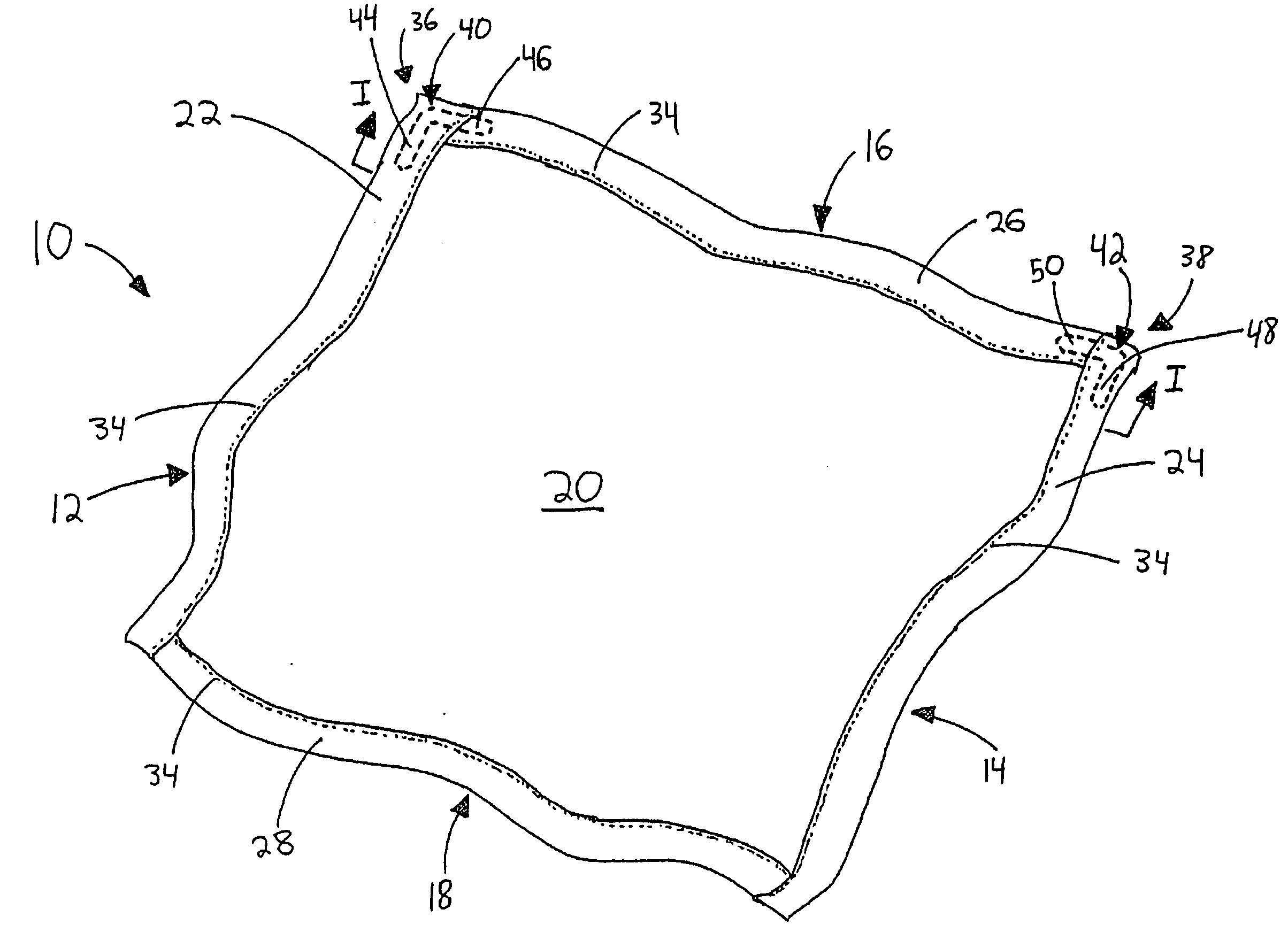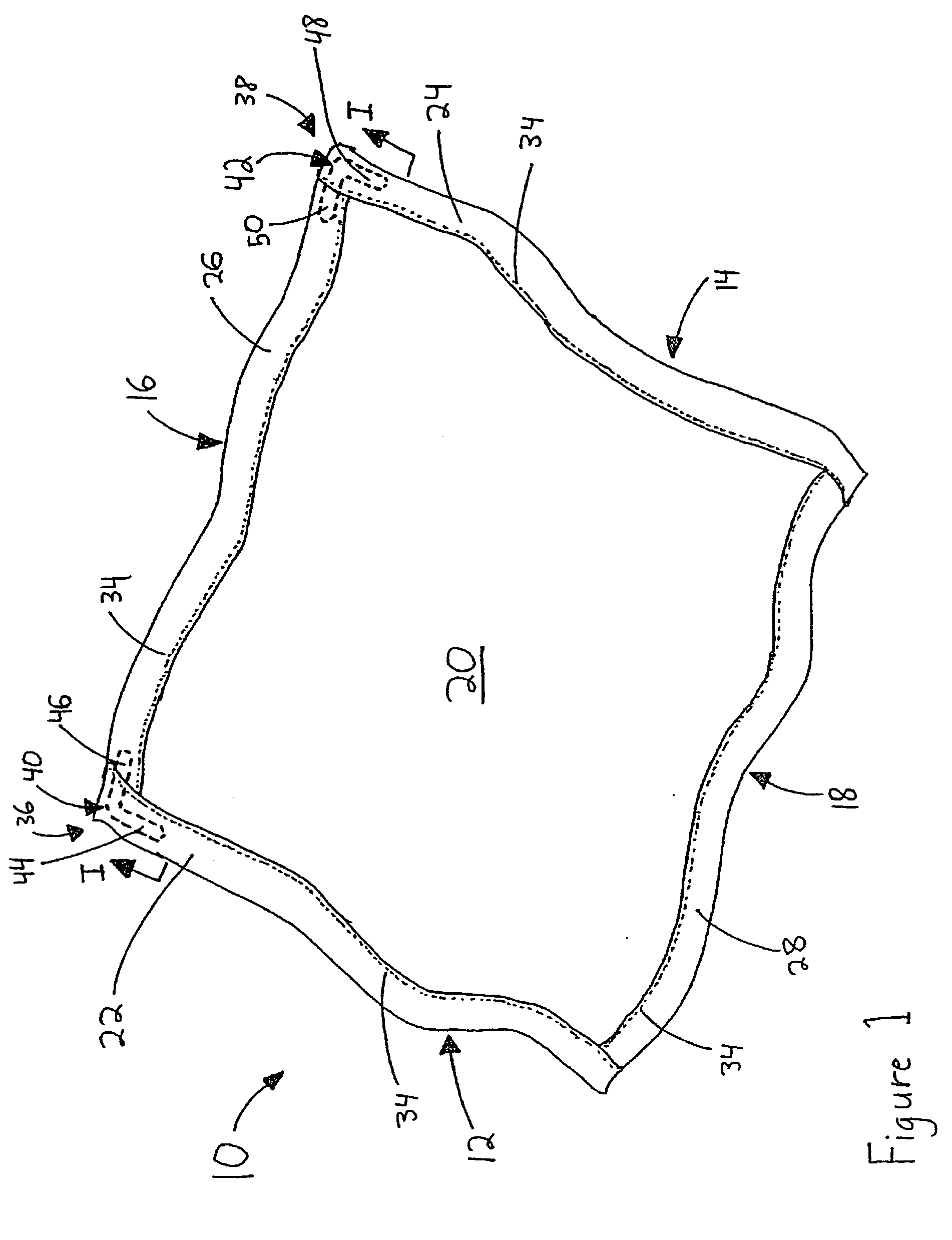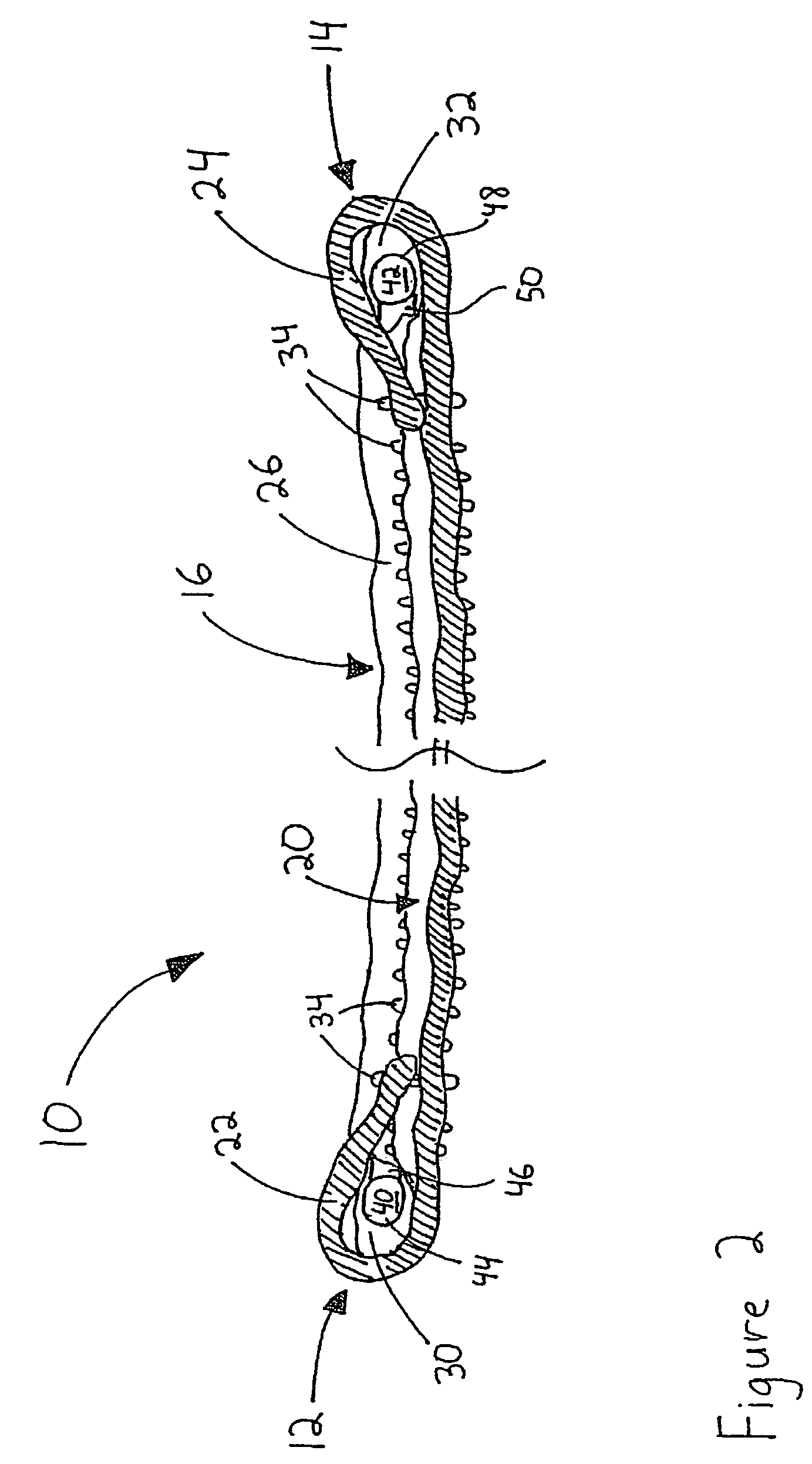Surgical towel having radiopaque element and methods for making same
a technology of radiopaque elements and surgical towels, applied in the field of surgical towels, can solve the problems of unsatisfactory solutions, mistaking ordinary tissue structures for radiopaque elements, and affecting the patient's health, and achieve the effect of inhibiting potential injuries
- Summary
- Abstract
- Description
- Claims
- Application Information
AI Technical Summary
Benefits of technology
Problems solved by technology
Method used
Image
Examples
Embodiment Construction
[0034] An embodiment of a substrate for use in surgical applications, namely a surgical towel according to one aspect of the present invention, is shown generally at 10. The surgical towel is useful in surgical applications, and is made from a suitable absorbent fabric, such as cotton.
[0035] The surgical towel shown in the Figures has first and second side edges 12, 14, first and second end edges 16, 18, and atop surface 20. The side edges 12, 14 are folded inwardly and secured to the top surface 20 to form first and second side folds 22, 24 along the side edges, respectively. Similarly, the end edges 16, 18 are folded inwardly and secured to the top surface 20 to form respective first and second end folds 26, 28 along the end edges 16, 18. Each of the folds 22, 24, 26, 28 defines a fold channel therewithin. In FIG. 2, the side fold channels 30, 32 defined by the first and second side folds 22, 24, respectively, are shown. The edges 12, 14, 16, 18 are secured to the top surface 20 ...
PUM
 Login to View More
Login to View More Abstract
Description
Claims
Application Information
 Login to View More
Login to View More - R&D
- Intellectual Property
- Life Sciences
- Materials
- Tech Scout
- Unparalleled Data Quality
- Higher Quality Content
- 60% Fewer Hallucinations
Browse by: Latest US Patents, China's latest patents, Technical Efficacy Thesaurus, Application Domain, Technology Topic, Popular Technical Reports.
© 2025 PatSnap. All rights reserved.Legal|Privacy policy|Modern Slavery Act Transparency Statement|Sitemap|About US| Contact US: help@patsnap.com



